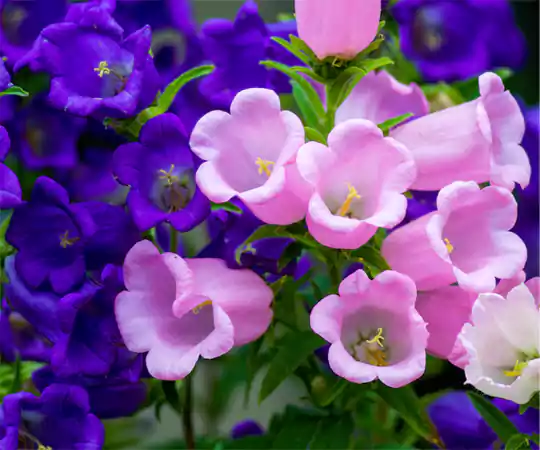
I still remember the first time I planted bell flowers in my garden. The delicate bell-shaped blooms instantly made my garden space feel magical. Growing in beautiful shades, these alluring species feel like nature’s very own painting.
Every year, these blooms turn my balcony garden into a dreamy landscape. From the soft pastel pink flowers to the deep royal purple blooms, these striking blossoms create a soothing display wherever planted.
Bell flowers are not only visually appealing, but they also carry different sentiments. Many blooms often represent hope, gratitude, and joy. Some exquisite varieties also have medicinal properties, while others carry spiritual significance and were used in many rituals to symbolize awakening and purity.
Moving further, I have put together a curated list of bell flowers in stunning color varieties for your ease. Keep reading this immersive blog to explore each type, its charm, and how you can grow them in your garden space.
10 Stunning White Bell Flowers
There is certainly something captivating about the white bell flowers that always grabs my attention. Bringing a sense of elegance and calmness to the garden, these pure white bell shaped flowers create a beautiful contrast with the greenery of the garden. Let us quickly take a look at my top 10 picks that you might also want to grow!
White Campanula (Campanula persicifolia ‘Alba’)

I simply love this white bell flower for its pure, starry blooms that last almost through the entire summer. These add a delicate touch to the border areas and look stunning in cottage gardens. If you are looking for smart ways to elevate your home decor, this genus can be a perfect addition.
| Hardiness Zone: 3-8 USDA |
| Light Exposure: Full sun to partial shade |
| Water: Moderate, only to keep the soil moist |
| Soil: Well-draining, rich organic soil |
Lily of the Valley (Convallaria majalis)
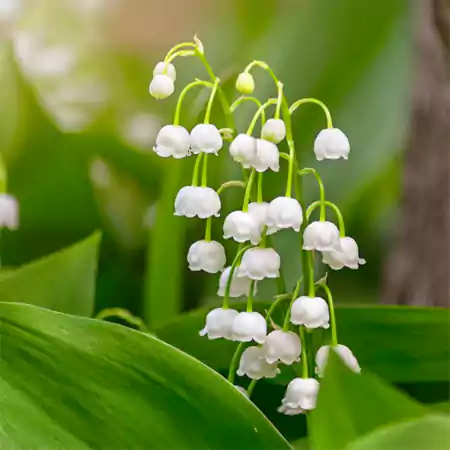
The Lily of the Valley is one of the most adorned white bell flower plant. The bell shaped blooms and the aromatic fragrance of the genus are its standout features. Apart from being visually appealing, this species holds symbolic meanings of purity, happiness, and new beginnings.
| Hardiness Zone: 2-9 USDA |
| Light Exposure: Mostly grown in filtered sunlight |
| Water: Enough to keep the soil moist |
| Soil: Well-draining, rich organic soil |
Snowdrop (Galanthus nivalis)
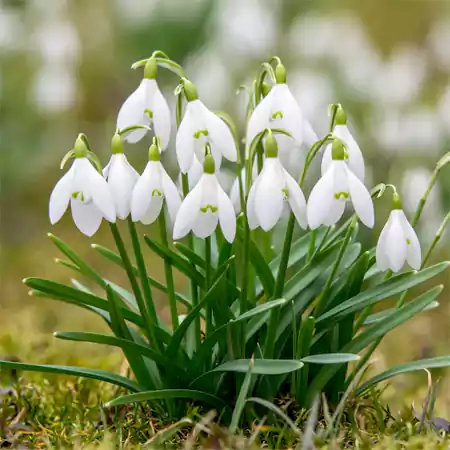
Also known as the January birth flower, Snowdrops indicate that winter is ending. I personally like growing them because of their drooping bell shaped white flowers. Although the genus is pollinator-friendly, the leaves of the plant can be mildly intoxicating for pets and humans.
| Hardiness Zone: 3-7 USDA |
| Light Exposure: Partial shade only |
| Water: In moderation, avoid waterlogging |
| Soil: Moist, humus-rich soil works wonders |
Freesia
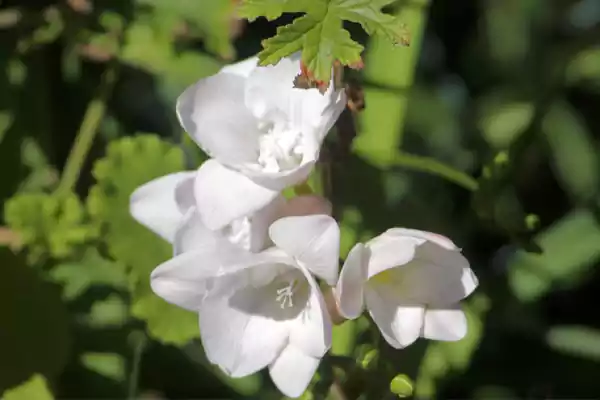
Just like me, if you are looking for stunning white bell flowers that are a complete blend of beauty and benefits, the Freesia blooms might just be a perfect choice. With their captivating scent, these blossoms are a favorite among gardeners and florists alike.
| Hardiness Zone: 9-10 USDA |
| Light Exposure: Full sun to partial shade |
| Water: In moderation, only to keep the soil moist |
| Soil: Well-draining sandy or loamy soil |
White Bluebell (Hyacinthoides non-scripta)
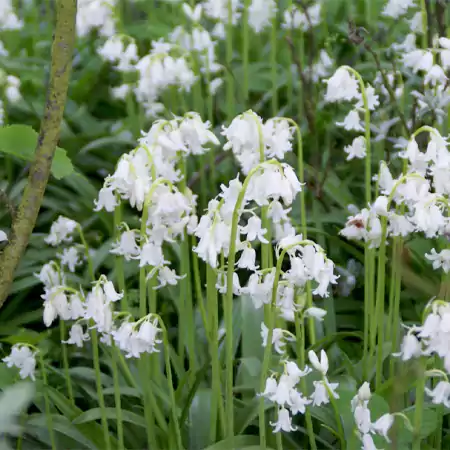
White Bluebells are an enchanting twist on the traditional blue variety, with graceful drooping stems having clusters of white bell shaped blooms. I love how these flowers brighten shady spots with their delicate beauty and gentle aromatic fragrance. These appear in mid to late spring, creating a romantic flair in any landscape.
| Hardiness Zone: 4-9 USDA |
| Light Exposure: Partial shade to full shade |
| Water: In moderation, only to keep the soil moist |
| Soil: Well-draining, fertile soil |
White Bellflower (Campanula lactiflora)
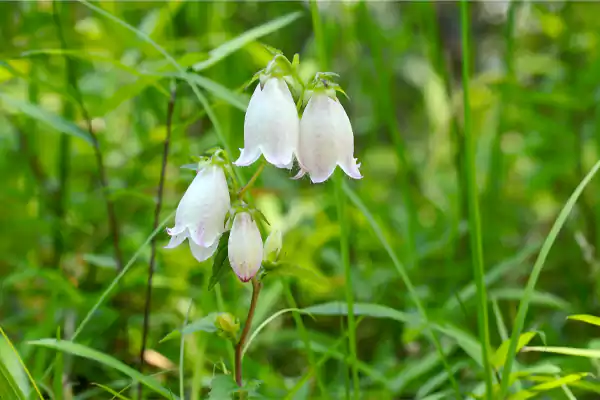
The White Bellflower is a tall, graceful perennial with clusters of bell-shaped blooms. Creating a beautiful contrast with the dark green leaves, this species is a popular choice for borders and cottage gardens. These flowers attract bees and butterflies and also add height and light to any landscape.
| Hardiness Zone: 5-8 USDA |
| Light Exposure: Full sun to partial shade |
| Water: In moderation, keep the soil evenly moist |
| Soil: Permeable, fertile soil |
White Bleeding Heart (Dicentra spectabilis ‘Alba’)
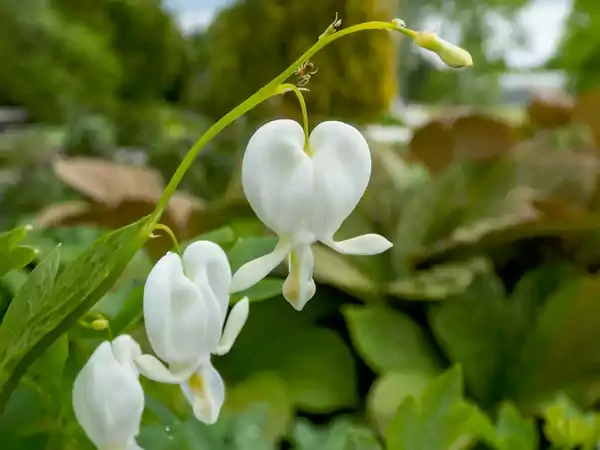
White Bleeding Heart is a shade-loving perennial with arching stems that bear heart-shaped white blooms. Their delicate beauty adds a whimsical touch to grasslands. I love how they combine elegance and charm and create a peaceful atmosphere wherever they are planted.
| Hardiness Zone: 3-9 USDA |
| Light Exposure: Partial to full shade |
| Water: Keep soil consistently moist |
| Soil: Permeable, fertile soil with rich organic matter |
White Cowberry
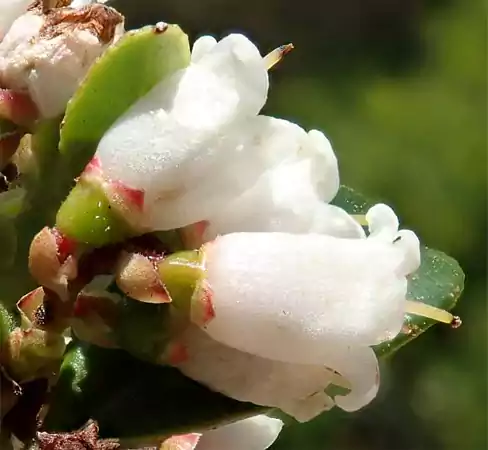
The White Cowberry is a charming, low-growing evergreen shrub that produces clusters of tiny, bell-shaped flowers in spring, followed by unusual white berries in autumn. Furthermore, this genus offers year-round interest and is a great choice for borders, rock gardens, and woodland edges.
| Hardiness Zone: 3-9 USDA |
| Light Exposure: Partial to full shade |
| Water: Keep soil consistently moist |
| Soil: Permeable, fertile soil with rich organic matter |
White Snowflake (Leucojum aestivum ‘Gravetye Giant’)
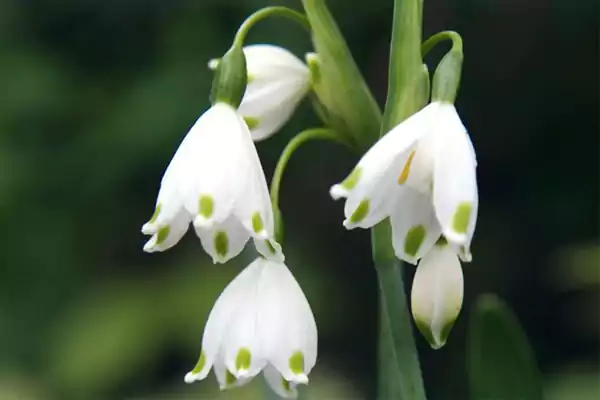
White Snowflake is a graceful spring-blooming plant having drooping white bell-like flowers, with each petal having a small green dot. These species bring a soft, elegant look to the garden area. If you are looking for smart ways to enhance your home decor and brighten up your space, these bell flowers are an ideal option.
| Hardiness Zone: 4-9 USDA |
| Light Exposure: Full sun to partial shade |
| Water: Keep soil consistently moist, water in moderation |
| Soil: Permeable, fertile soil |
White Heath (Erica carnea ‘Springwood White’)
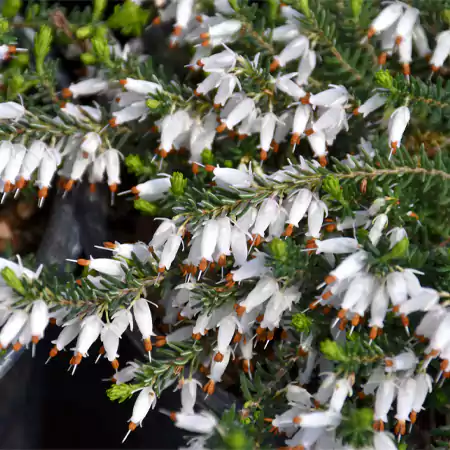
White Heath is a hardy evergreen shrub that produces masses of tiny white bell-shaped flowers from late winter to spring. This genus makes sure to lighten up the garden during the frost season when most plants are still dormant. Additionally, it requires minimal care, which makes it a perfect option for new plant lovers.
| Hardiness Zone: 5-7 USDA |
| Light Exposure: Requires full sun exposure |
| Water: Low to moderate, drought-tolerant once established |
| Soil: Permeable, acidic soil |
Exploring the world of white bell flowers has taught me just how versatile and enchanting these blooms can be. From woodlands to garden showstoppers, each variety brings its own beauty and meaning. With the right care and proper nourishment, they can add magic to any garden space.
Explore the 10 Most Vibrant Pink Bell Flowers
Each pink bell flower has its own way of brightening up any garden area. From soft blush to vibrant fuchsia, each variety offers its own charm. I’ve explored ten of the most striking pink bell blooms that can add beauty, texture, and romance to your outdoor spaces.
| Serial No | Flower Name | Image | Description |
| 1 | Pink Campanula (Campanula medium ‘Rosea’) | 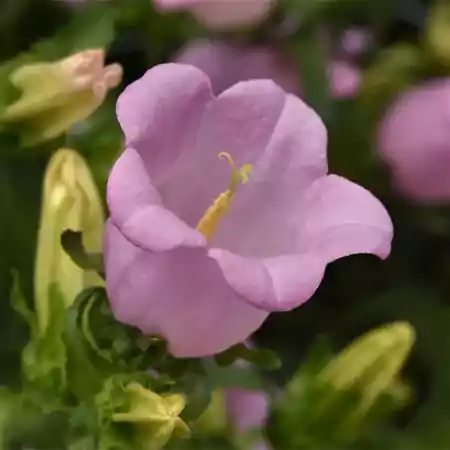 | A herbaceous perennial having tall stems that bear pink bell flowers, perfect for cottage gardens. |
| 2 | Pink Foxglove (Digitalis purpurea ‘Rosea’) | 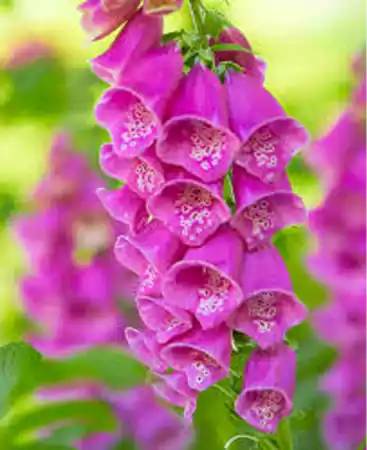 | Elegant blooms with pastel to deep pink tubular bells that attract bees and other pollinators. |
| 3 | Pink Lily of the Valley (Convallaria majalis ‘Rosea’) | 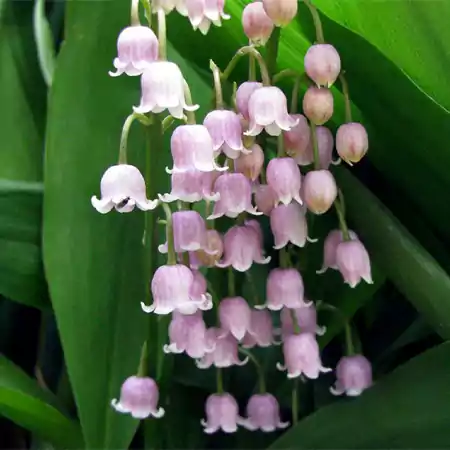 | Mostly grown at shady spots, this genus has delicate pink bells with a sweet fragrance. |
| 4 | Pink Angel’s Trumpet (Brugmansia ‘Pink Perfume’) | 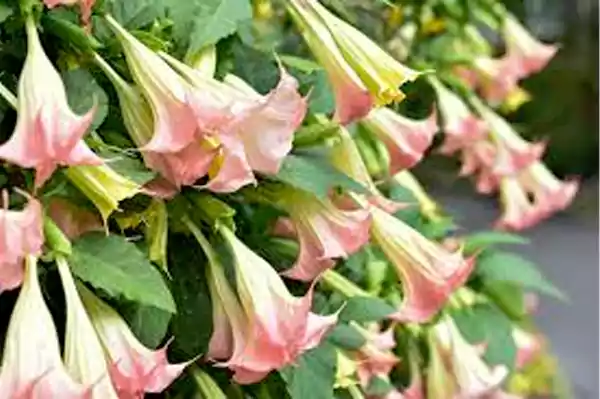 | A flowering shrub having large, hanging, pink, trumpet-shaped bells with a strong fragrance. |
| 5 | Pink Bell Heather (Erica cinerea ‘Pink Ice’) | 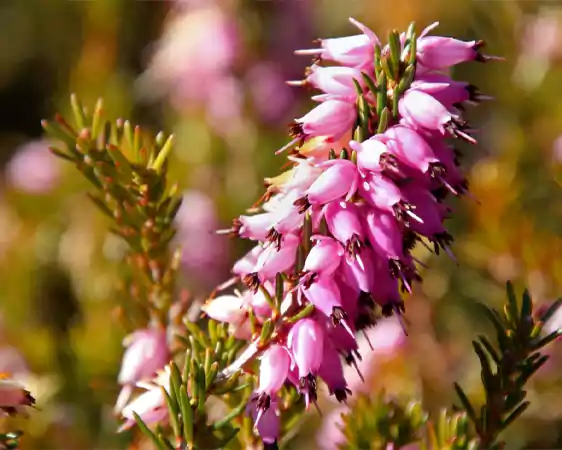 | Usually blooming from summer to fall, this flower has dense clusters of tiny pink bells. |
| 6 | Pink Bleeding Heart (Lamprocapnos spectabilis ‘Valentine’) | 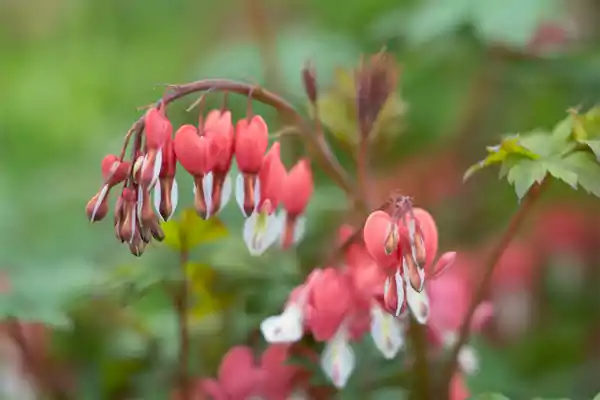 | Almost similar to the white bleeding heart, the plant has arching stems with pastel pink blooms. |
| 7 | Pink Japanese Snowbell (Styrax japonicus ‘Pink Chimes’) | 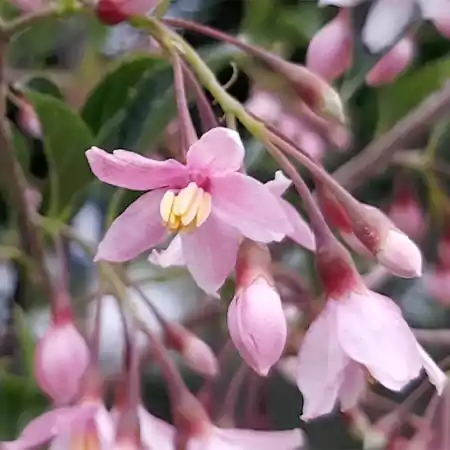 | This is a small deciduous flowering tree known for its graceful pink bell-shaped flowers. |
| 8 | Pink Pieris (Pieris japonica ‘Mountain Fire’) | 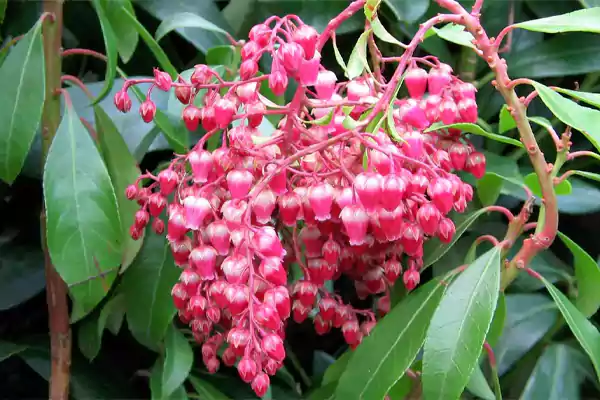 | Clusters of pale pink bells in early spring with glossy dark green leaves. |
| 9 | Pink Canterbury Bells (Campanula medium ‘Pink Champion’) | 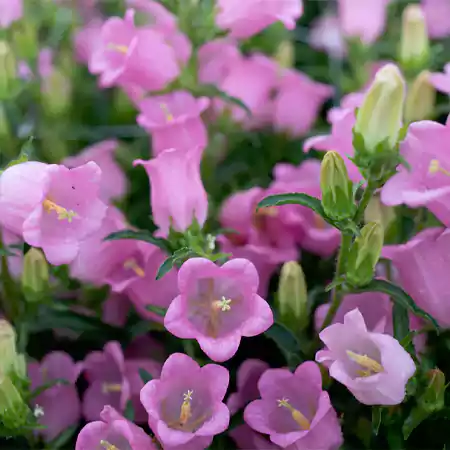 | One of the most classic pink bell flowers that stands tall even during a dry spell. |
| 10 | Pink Mountain Laurel (Kalmia latifolia ‘Pink Charm’) | 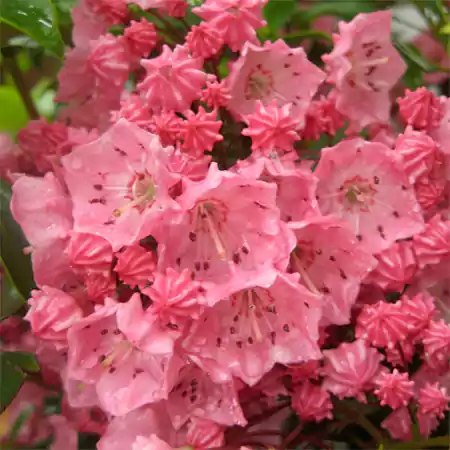 | This is a broad-leaved flowering shrub that bears rounded clusters of pink bell flowers. |
With their diverse shades and elegant bell forms, pink bell flowers bring warmth and sophistication to gardens of all styles. Whether you are looking for a bold color or a subtle pastel tone, there is a pink bell genus for everyone out there. Give them the right growing conditions, and you can have your picture-perfect blooms.
10+ Alluring Purple Bell Shaped Flowers
To me, bell shaped purple flowers have always been a little magical. The rich tones from soft lavender to deep violet fill any garden space with refined appeal. Below, I have curated a list of 10+ alluring purple bell-shaped flowers for your ease.
| Serial No | Flower Name | Image | Description |
| 1 | Purple Campanula (Campanula glomerata) | 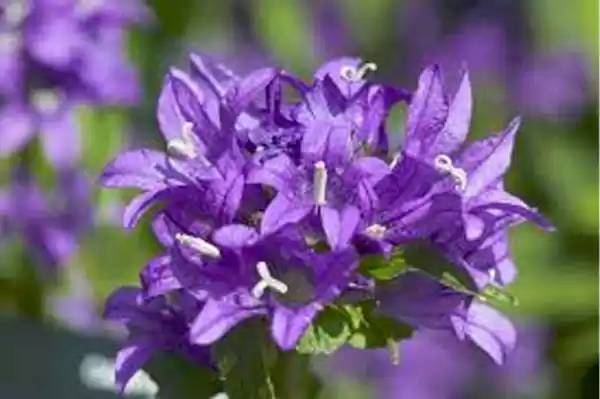 | This is a biennial plant having dense clusters of vivid purple bell-like flowers. |
| 2 | Purple Foxglove (Digitalis purpurea) | 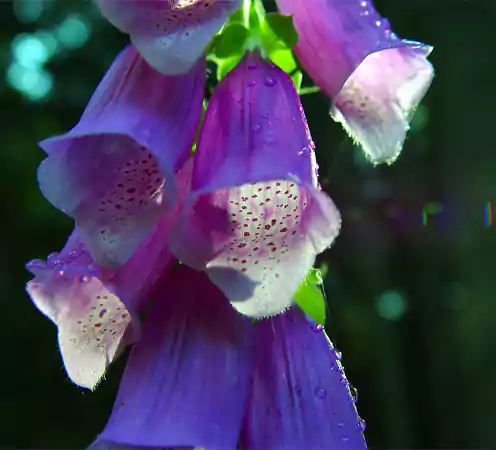 | Cherished for its beauty, this plant bears purple tubular bells that attract pollinators like bees and butterflies. |
| 3 | Canterbury Bells ‘Deep Blue’ (Campanula medium) | 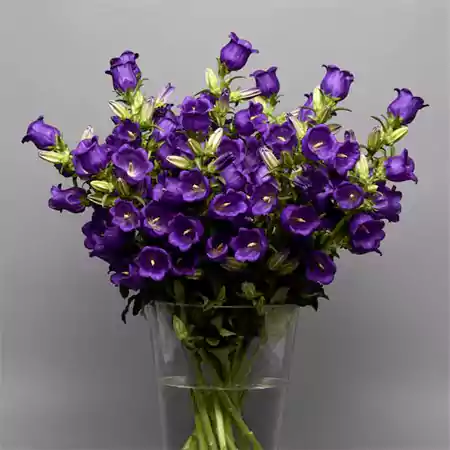 | This is a biennial flowering plant known for its attractive, bell-shaped, deep blue flowers. |
| 4 | Purple Bell Heather (Erica cinerea) | 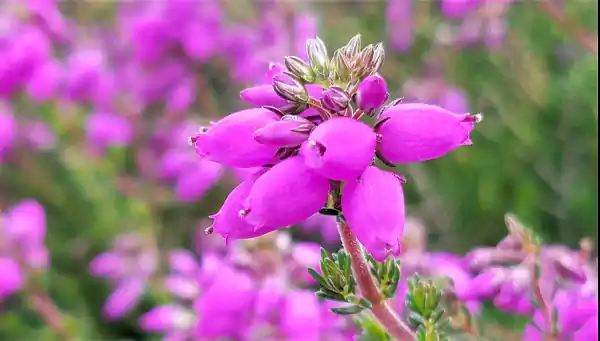 | A low-growing shrub with clusters of purple bells growing on tall upright stems. |
| 5 | Purple Mountain Laurel (Kalmia latifolia ‘Purple Charm’) | 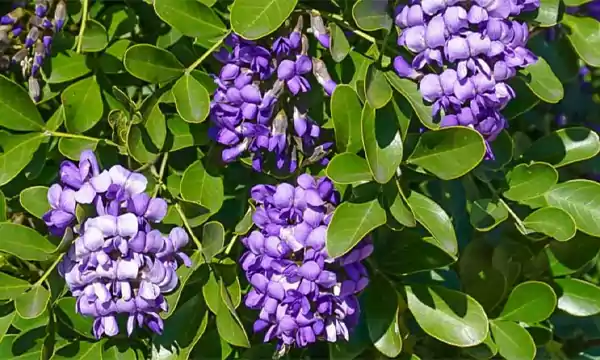 | Evergreen shrub with intricate purple-tinted bells in spring. |
| 6 | Japanese Snowbell ‘Evening Light’ (Styrax japonicus) | 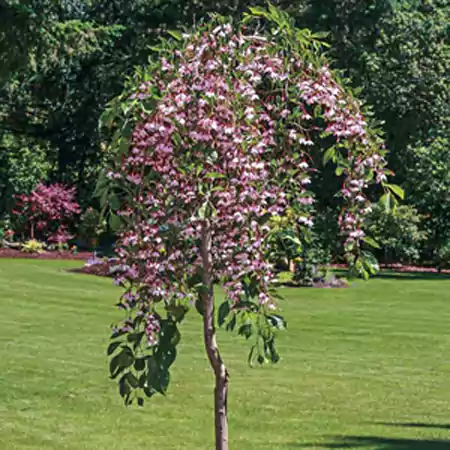 | Pastel/lavender bell-like flowers hanging from dark, glossy-leaved branches. |
| 7 | Balloon Flower (Platycodon grandiflorus ‘Sentimental Blue’) | 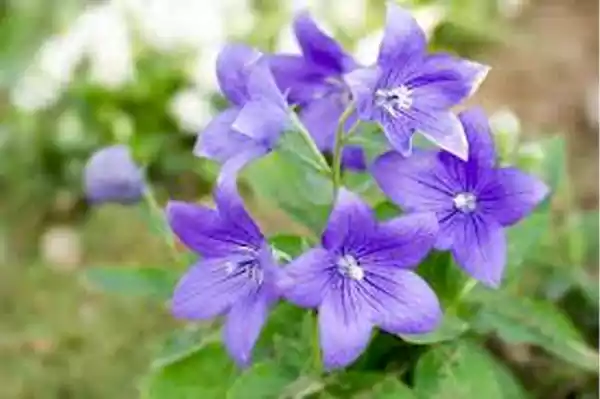 | The buds of this genus swell like balloons before opening into purple bell-like flowers. |
| 8 | Purple Angel’s Trumpet (Brugmansia ‘Purple Queen’) | 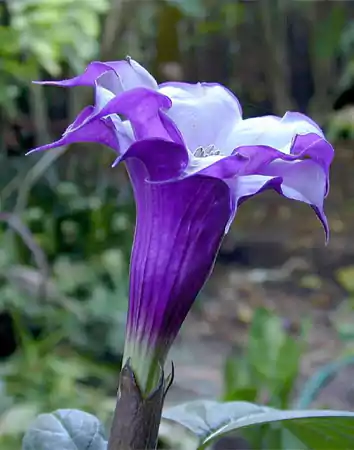 | This bell flower has large, pendulous purple trumpets with a tropical feel. |
| 9 | Clematis ‘Etoile Violette’ | 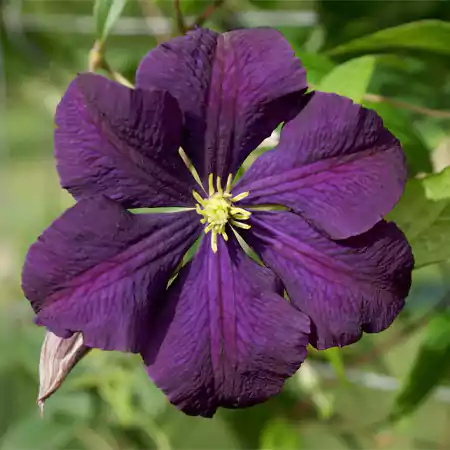 | This is a climbing plant with dark purple flowers having bell-shaped petals. |
| 10 | Coral Bells ‘Midnight Rose’ (Heuchera) | 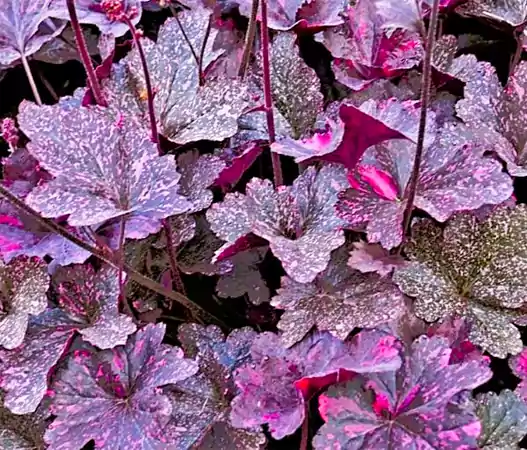 | Noted for its deep purple foliage, this plant has coral bell flowers that usually bloom in summer. |
| 11 | Spanish Bluebell ‘Violet Beauty’ (Hyacinthoides hispanica) | 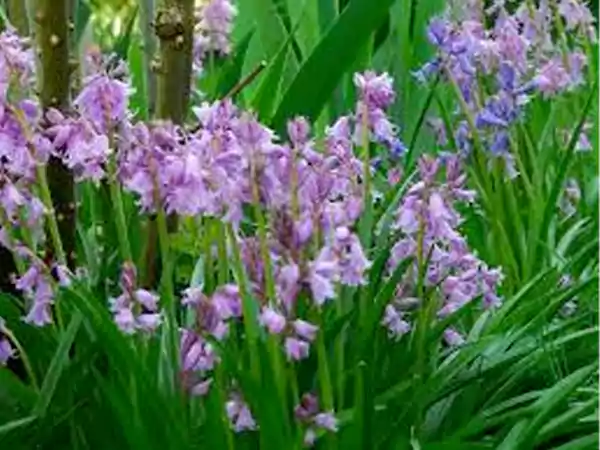 | Purple-violet bells on arching stems, mostly grown for attracting pollinators to the garden. |
The purple bell-shaped flowers bring an undeniable grace to any garden design. Furthermore, different shades of the color represent distinct emotions like boldness, making the landscape dramatic and visually appealing. By adding just one purple bell shaped flower, you can transform your ordinary space into timeless beauty.
Yellow Flowers That Are Bell Shaped
Yellow bell-shaped flowers radiate joy and warmth, instantly lifting the mood and vibe of any garden area. The bright golden hues capture the vibrancy in every petal. Allow me to walk you through some stunning yellow bell flowers that can bring brightness, charm, and a burst of color to your outdoor space.
| Serial No | Flower Name | Image | Description |
| 1 | Yellow Bell (Tecoma stans) | 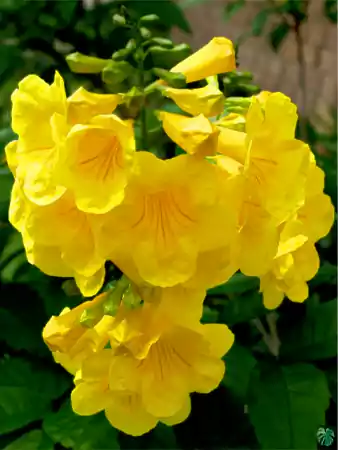 | It has large trumpet-shaped bells that bloom in abundance in warm climates. |
| 2 | Yellow Foxglove (Digitalis grandiflora) | 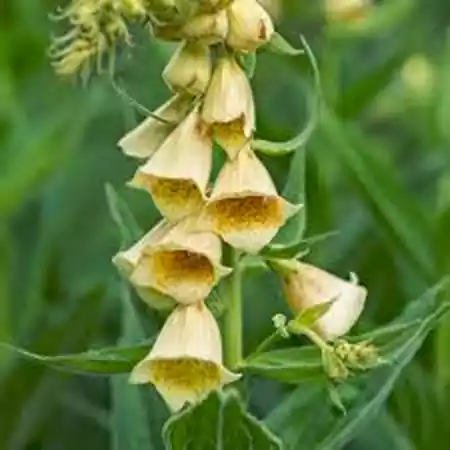 | This genus features yellow, tubular flowers with a dark brown center and is highly attractive to pollinators. |
| 3 | Yellow Bellflower (Campanula punctata ‘Yellow Chime’) | 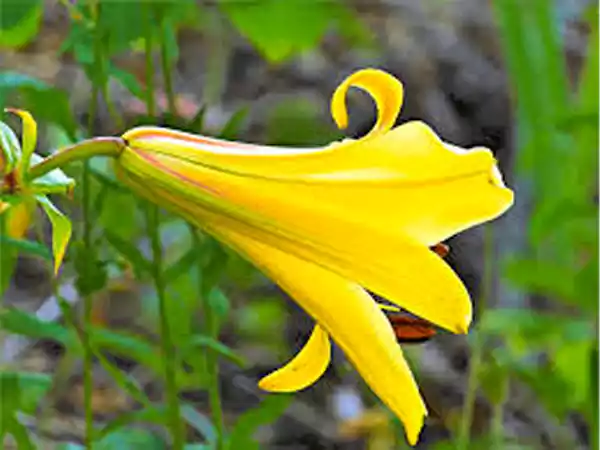 | Mostly blooming in late winter, this genus bears bright yellow bell-like flowers. |
| 4 | Winter Jasmine (Jasminum nudiflorum) | 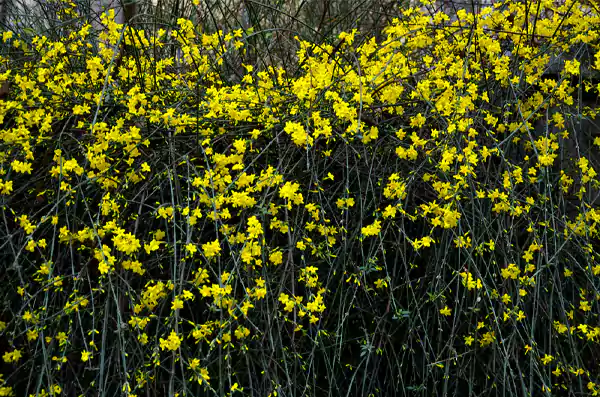 | Bright yellow tubular blooms appearing in late winter instantly lighten up the garden. |
| 5 | Yellow Trumpet Vine (Campsis radicans ‘Flava’) | 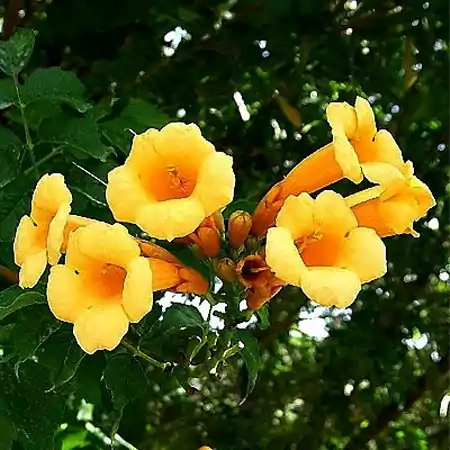 | This is a climbing plant with large golden bell-shaped flowers. |
| 6 | Yellow Columbine (Aquilegia chrysantha) | 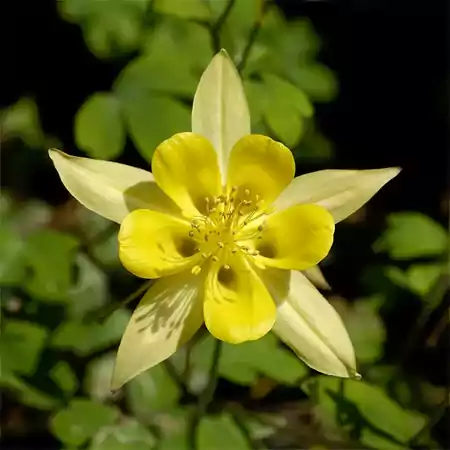 | Along with vibrant yellow bells, this flower also has elegant spurs and mostly blooms in spring. |
| 7 | Canary Island Bellflower (Canarina canariensis) | 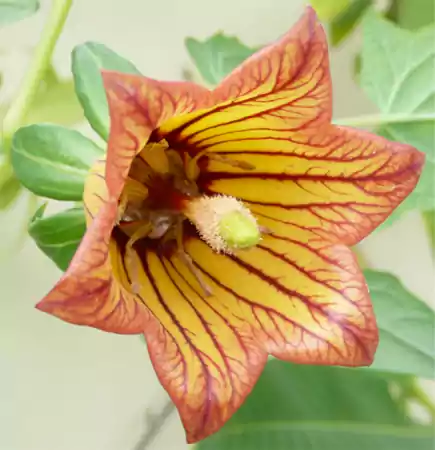 | This is a tropical flower with yellow-orange bell-shaped blooms, usually planted to attract pollinators. |
| 8 | Yellow Fritillary (Fritillaria imperialis ‘Lutea’) | 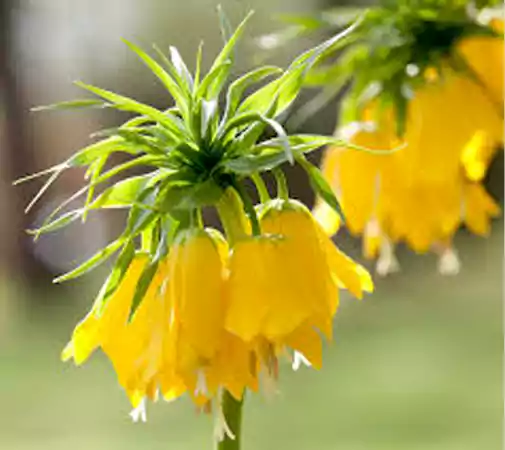 | This is the most impressive bulbous herbaceous perennial plant with bell-shaped flowers topped by a crown of small leaves. |
| 9 | Daffodil (Narcissus) | 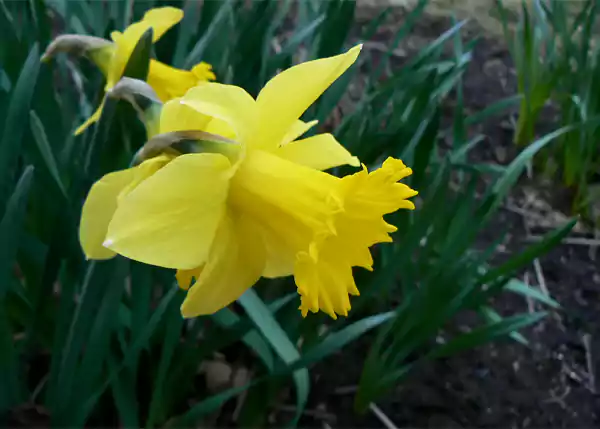 | The Daffodil is a bright yellow flower with vibrant blooms, having a bell-shaped center. |
| 10 | Golden Lily of the Valley (Convallaria majalis ‘Aurea’) | 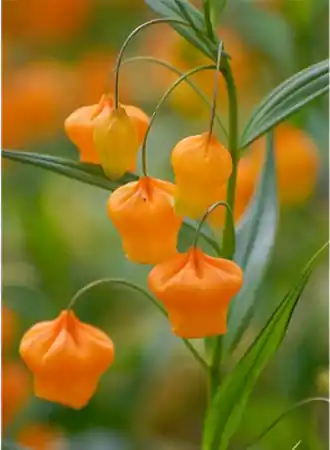 | This genus is a rare variety with tiny yellow-orange bell flowers, mostly planted to add a pop of color to the garden space. |
Yellow bell flowers bring an irresistible sunshine-like glow to the gardens, brightening up even the dull corners. Whether you wish to add them for their vibrant hues or simply for the seasonal charm, these flowers with bell shaped flowers will never fail to spread joy.
Optimal Growing Conditions for Bell Flowers
When I first started growing bell shaped flowers, I quickly realized that their stunning blooms require optimal growing conditions to flourish. From sunlight to soil, each factor plays a major role in the nourishment of the bell flowers. Moving further, let us quickly take a look at how you can give these beauties a perfect environment to grow luxuriously.
Sunlight Exposure
Mostly, these flowers thrive in full sun to partial shade. In cooler climates, bright light encourages more blooms, while in areas having warm temperatures, partial shade protects the leaves of the genus from getting damaged.
If you wish to keep the flowers fresh for long periods, consider planting them in areas where they can get morning sun and afternoon shade.
Soil Requirements
Although these flowers can be grown in a variety of soil types, they mostly prefer well-draining, fertile soil rich in organic matter. I usually make a mixture with compost and manure and add it to the potting soil before planting the flowers.
The soil pH should be slightly acidic to neutral, around 6.0-7.0, for optimal nutrient absorption. Flower bells require consistently moist soil, but not too soggy.
Water Needs
While the bell flowers require consistent moisture, overwatering can be harmful. Depending on the weather conditions, I water the plants deeply once or twice a week. Make sure that the soil is moist but not soggy, as it can lead to root rot.
The container-grown flowers require frequent watering compared to those grown in the garden. Mulching around the base of the plant can keep the roots cool and retain moisture.
Temperature & Climate
These blooms generally prefer growing in areas having cool or moderate climates. Most of the bell shaped flower varieties thrive in USDA zones 3-9. Placing the plant in areas having extreme heat can scorch the leaves and damage the blooms, therefore shortening their lifespan.
If you are planning to grow them during the summer, place them in an area where they get filtered sunlight. These beauties can tolerate temperature fluctuation to a limited extent only. Growing them in regions having moderate weather can be the right choice.
Fertilization
Feeding bell flowers with a balanced, slow-release fertilizer in early spring can encourage lush growth and abundant blooms. I sometimes like adding a liquid spray every 4–6 weeks during the flowering season to keep them vibrant.
Do not over-fertilize, as excessive nutrition can also lead to root rot, especially if the drainage of the soil is poor. If the leaves of the plant turn light green, yellow, or brown, it might need fertilizer or more sunlight.
Over time, I have realized that with proper care and growing conditions, the bell flowers will reward you with breathtaking displays. Providing the genus with the perfect blend of sunlight, water, and soil, they can grow luxuriantly and have a long, healthy lifespan.
Significance of Some Popular Bell Flowers
One of the reasons I am so drawn to the bell flowers is their rich symbolism and the deep story each genus carries. The Lily of the Valley has always been my favorite, not just because of its sweet fragrance, but for the emotions it represents. Additionally, the white blooms of the plant symbolize purity, humility, and fresh beginnings, which is why they are mostly used in wedding decoration and in bouquets too. Furthermore, let us quickly explore the significance of some more popular bell flowers.
- Bluebells: Represent constancy and gratitude. A reminder of enduring bonds and loyal friendships.
- Canterbury Bells: Associated with gratitude and faith. Their tall, elegant spires feel like nature’s way of saying thank you.
- Foxgloves: Symbolize both protection and caution due to their toxic nature. A reminder that beauty and danger can sometimes coexist.
- Snowdrops: Represent hope and resilience. Emerging through the snow, they signal the promise of brighter days ahead.
Each bell shaped flower carries its own story, filling the garden with deep emotions and timeless beauty. Once I knew the meaning and the sentiments they represent, I now feel a stronger bond with the blooms I grow.
Final Thoughts
Bell flowers are simply more than just pretty garden additions—they are nature’s way of mixing elegance, charm, and symbolism in one bloom. From pure white blossoms to bold violet, each flower has a distinct description, adding both beauty and meaning to the landscape.
I feel that once you understand the optimal growing conditions and how to deal with the challenges they face, cultivating them can be the most rewarding experience and satisfying too. Whether you are looking for a bold woodland species or simply an eye-catching bloom for your space, there is a bell flower to suit everybody’s taste. Go ahead, plant them thoughtfully and experience different sentiments season after season.
What are the common bell flowers?
Clustered bell flowers, Canterbury bells, and peach-leaved bell flowers are some common examples of this type.
Do bell flowers like sun or shade?
The sunlight requirement of the bell flowers varies from species to species. Some thrive in full sunlight, while others grow best in shade.
Do bell flowers come back every year?
Mostly, the Campanula species are hardy perennials and come back year after year.
Does the bell flower spread?
Yes, some types of bell flowers can spread, as they have an invasive spreading habit.
Bellflower — Britannica






